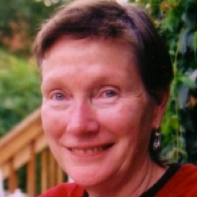For Canadians in many provinces and territories, winter is already here.
But beyond the dread of shoveling, trying to drive or walk on icy streets, and all the rest of our combat against the season—and also beyond the joy of skiing, ice skating, snowboarding, building snowmen, playing outdoor hockey, or simply sledding—winter is the seasonal reminder of impermanence. Fortunate is the one who can remain quiet to contemplate that fact, even for a few minutes a day.
When flowers and fruit are long gone, and branches are bare on the trees, it’s hard not to think of impermanence and death—exactly what human beings try to shun with bright lights, green wreaths, candles, and all the rest, while the big, outdoor whiteness obliterates all the warm colours of fall.
Winter makes us contemplate our fear of death, something as natural as it is inevitable.
If, as we age, we pay attention to the changes in our body, and better yet to our mind when we lose something—like a passport—even temporarily, we begin to make friends with loss. If something is gone, it is gone, and no fretting will bring it back. As we learn to make friends with such losses, we are beginning to make friends with death.
By applying inquisitiveness and awareness to our experience of panic, anger, sadness—whatever arises—we calm down a bit.
Further, when a dear friend or family member is dying, having trained ourselves even a little in calming our reactive drama, we are better able to just be with this dear one, even someone who is beyond talking. Then the channel of connection is maintained simply by being present. Cards and flowers are useless. There is very little one can “do.” But one can be. Just being present creates a calm atmosphere, like a thick blanket of snow quieting the neighbourhood street.
When people don’t understand this, and try to fuss over the dying person, they usually are just trying to make themselves feel better or to be seen to care, while actually disturbing the peaceful environment. They have not made friends with and accepted their own sadness, which is actually a quiet feeling when one is not struggling against it.
If one knows how to meditate, this is helpful. One can settle, being aware of thoughts that draw us away from the quiet space. By our dropping strategies, the dying person is enveloped in gentle acceptance.
This is so different than armouring ourselves, disconnecting, or trying to avoid witnessing death. The dying person is worthy of our presence. And as we dissolve our petty self-concerns, the raw aspect of death reveals itself, shattering the myth of permanence. It is a profound experience. In the open space in which so little is happening, all the drama, anxiety, and self-cherishing dies too, if we let it.
In our everyday experience, there is no life without death, no inhalation without exhalation, no freshness without letting go.
In the West, death has been “othered,” separated from daily experience. And this makes it seem scarier than it is. In cultures in which death is integrated into ordinary life, the whole of aging and life is accepted.
Our hospitals tend to maintain boundaries and patients are kept at a distance with cool professionalism. At the same time, there is great pressure on nurses to do many procedures for too many patients, and it is challenging for them to relate kindly. In a busy hospital, there is much abrupt poking and prodding, and the patient may even be called a body part!
But if you are able to be present for the dying person, even a doctor in a rush may slow down, perhaps even stop to connect with whoever is in the room, and this helps the atmosphere remain peaceful for the dying person.
The body knows how to die. Life begins with an in-breath and ends with an out-breath, just as winter clears the way for another spring.

No comments:
Post a Comment